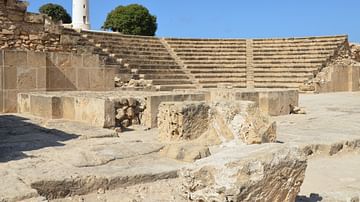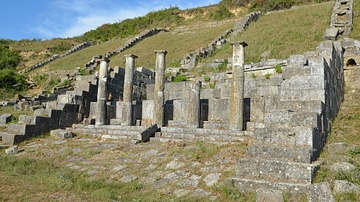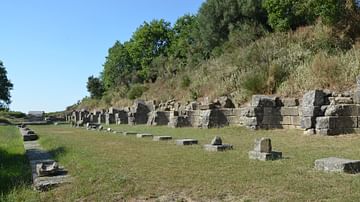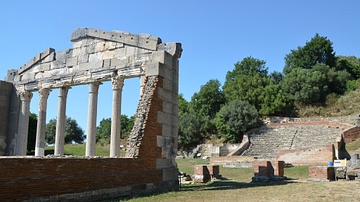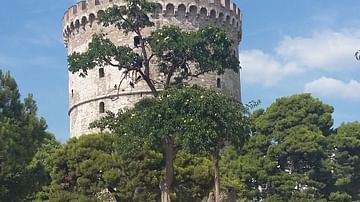Illustration
Gold ivy wreath from Nea Apollonia, Thessaloniki, 350-325 BCE.
Archaeological Museum of Thessaloniki.
Ceremonial wreaths were among the most prestigious adornments in the ancient Greek world. Probably a predecessor of later royal crowns, these emblematic headgears used to sit elaborately on the locks of male and female gods, rulers, priests, and heroes on various occasions such as religious festivals, public appearances, funerals, and sacrifices, athletic and performance competitions, and liminal or casual gatherings. Although most famously made of laurel leaves, the Greek stephanoi of olive, ivy, and oak leaves also survive in painted or sculpted forms. Macedonian royal burials are among the most prolific contexts of retrieving gold and silver wreaths, which were traditionally placed on the funerary casket that preserved the bones of the elites in their burial chamber. Today, collections of glamorous Macedonian wreaths from Philip II of Macedon and Alexander the Great’s era in the 4th century BCE and beyond can be visited in the Museum of the Royal Tombs of Aigai (Vergina), the Archaeological Museum of Pella, and the Archaeological Museum of Thessaloniki.
About the Author
Photo Location
This photograph was taken at the following location:
External Links
Cite This Work
APA Style
Choubineh, N. (2024, October 01). Gold Ivy Wreath from Nea Apollonia, Thessaloniki. World History Encyclopedia. Retrieved from https://www.worldhistory.org/image/19497/gold-ivy-wreath-from-nea-apollonia-thessaloniki/
Chicago Style
Choubineh, Nathalie. "Gold Ivy Wreath from Nea Apollonia, Thessaloniki." World History Encyclopedia. Last modified October 01, 2024. https://www.worldhistory.org/image/19497/gold-ivy-wreath-from-nea-apollonia-thessaloniki/.
MLA Style
Choubineh, Nathalie. "Gold Ivy Wreath from Nea Apollonia, Thessaloniki." World History Encyclopedia. World History Encyclopedia, 01 Oct 2024, https://www.worldhistory.org/image/19497/gold-ivy-wreath-from-nea-apollonia-thessaloniki/. Web. 08 May 2025.



